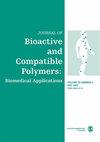Cellulose acetate scaffold containing hydroxyapatite/graphene oxide nanocomposite by electrospinning for advanced regenerative therapies
IF 2.2
4区 生物学
Q3 BIOTECHNOLOGY & APPLIED MICROBIOLOGY
引用次数: 0
Abstract
The aim of this study was to synthesize and characterize Cellulose Acetate (CA) porous scaffolds using the electrospinning technique associated with Hydroxyapatite (HA) and different concentrations of graphene oxide (GO), for advanced regenerative therapies application. The scaffolds were categorized into four distinct groups based on their composition: (1) Pure CA scaffolds; (2) CAHA scaffolds; (3) CAHAGO 1.0% scaffolds; (4) CAHAGO 1.5% scaffolds. Transmission Electron Microscopy (TEM) was used for the characterization of the nanocomposite. The scaffolds were analyzed by X-Ray Diffraction (XRD), Fourier Transform Infrared Spectroscopy (FTIR), Raman Spectroscopy, Scanning Electron Microscopy with Energy Dispersive Spectroscopy (SEM/EDS), and in vitro cell viability assays (WST). For the biological test analysis of Variance (two-way) was used, followed by Tukey’s post-test (α = 0.05). The TEM analysis allowed for the visualization of the deposition of HA on the graphene sheets, confirming the synthesis of the nanocomposite. XRD revealed the predominant presence of CaP phases in the CAHA, CAHAGO 1.0%, and CAHAGO 1.5% groups, underscoring the inherent mineral composition of the scaffolds. FTIR demonstrated cellulose characteristics and PO通过电纺丝技术将含有羟基磷灰石/氧化石墨烯纳米复合材料的醋酸纤维素支架用于先进的再生疗法
本研究旨在利用电纺丝技术合成醋酸纤维素(CA)多孔支架并对其进行表征,同时将其与羟基磷灰石(HA)和不同浓度的氧化石墨烯(GO)结合起来,用于先进的再生疗法。这些支架根据其成分分为四组:(1) 纯 CA 支架;(2) CAHA 支架;(3) CAHAGO 1.0% 支架;(4) CAHAGO 1.5% 支架。纳米复合材料的表征采用了透射电子显微镜(TEM)。通过 X 射线衍射 (XRD)、傅立叶变换红外光谱 (FTIR)、拉曼光谱、扫描电子显微镜与能量色散光谱 (SEM/EDS) 和体外细胞活力检测 (WST) 对支架进行了分析。生物测试采用方差分析(双向),然后进行 Tukey 后检验(α = 0.05)。通过 TEM 分析可观察到 HA 在石墨烯片上的沉积,从而证实了纳米复合材料的合成。XRD 显示,在 CAHA、CAHAGO 1.0% 和 CAHAGO 1.5% 组中主要存在 CaP 相,突出了支架固有的矿物成分。傅立叶变换红外光谱(FTIR)显示了含有 HA 的组中的纤维素特征和 PO4 带,证实了这种材料的有效加入。拉曼光谱在 GO 组中显示出明显的峰值,最终验证了石墨烯与支架基质的成功结合。显微照片显示,整个表面充满了不规则的孔隙,这是支架形成过程中纤维错综复杂的重叠造成的。重要的是,所有支架在实验中都表现出极佳的细胞活力。48 小时后,在 CAHA 和 CAHAGO 1.5% 组中观察到了细胞增殖过程(p < 0.05)。总之,合成的支架在组织工程领域大有可为,为再生疗法提供了一个全新的视角。
本文章由计算机程序翻译,如有差异,请以英文原文为准。
求助全文
约1分钟内获得全文
求助全文
来源期刊

Journal of Bioactive and Compatible Polymers
工程技术-材料科学:生物材料
CiteScore
3.50
自引率
0.00%
发文量
27
审稿时长
2 months
期刊介绍:
The use and importance of biomedical polymers, especially in pharmacology, is growing rapidly. The Journal of Bioactive and Compatible Polymers is a fully peer-reviewed scholarly journal that provides biomedical polymer scientists and researchers with new information on important advances in this field. Examples of specific areas of interest to the journal include: polymeric drugs and drug design; polymeric functionalization and structures related to biological activity or compatibility; natural polymer modification to achieve specific biological activity or compatibility; enzyme modelling by polymers; membranes for biological use; liposome stabilization and cell modeling. This journal is a member of the Committee on Publication Ethics (COPE).
 求助内容:
求助内容: 应助结果提醒方式:
应助结果提醒方式:


